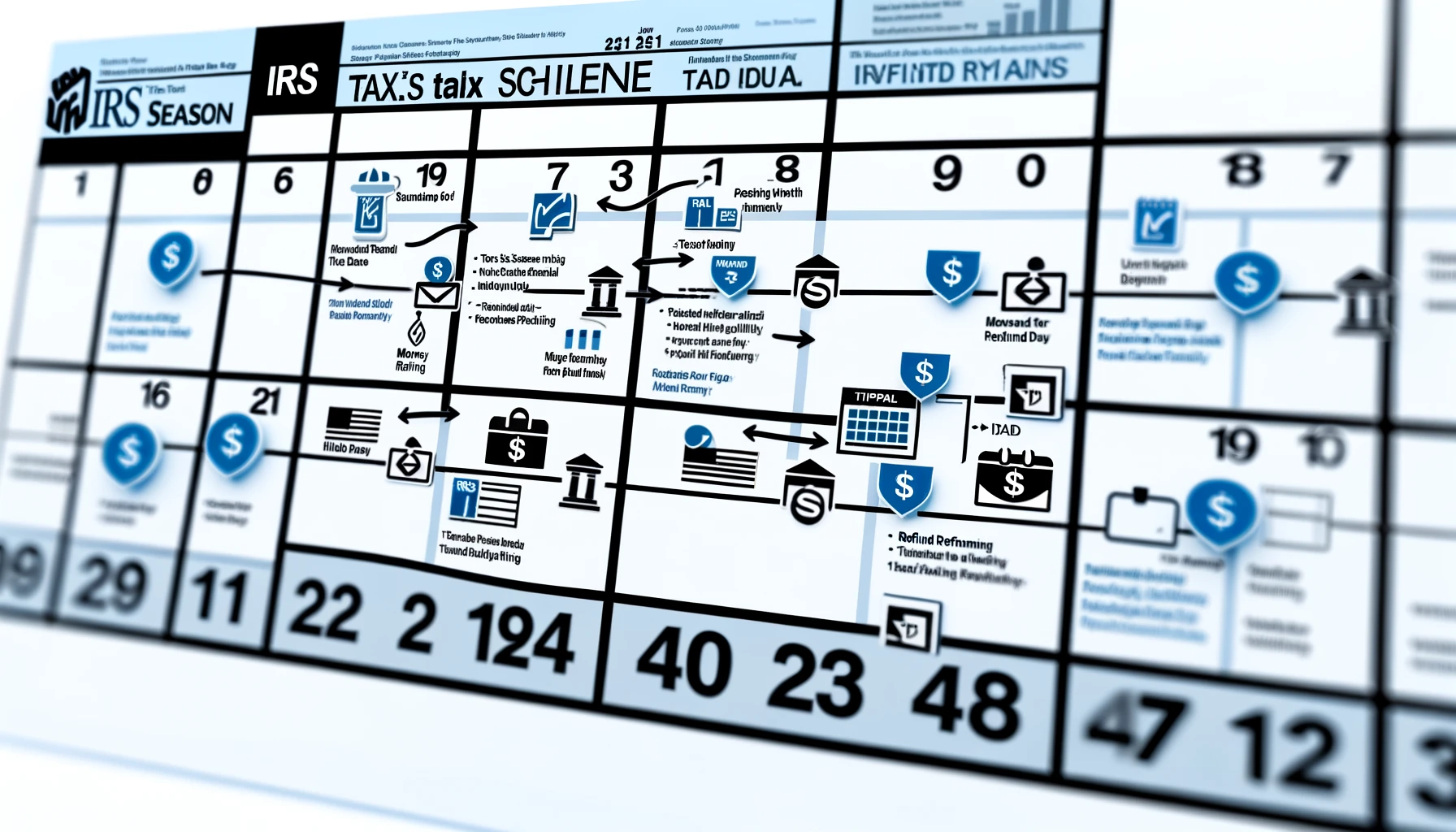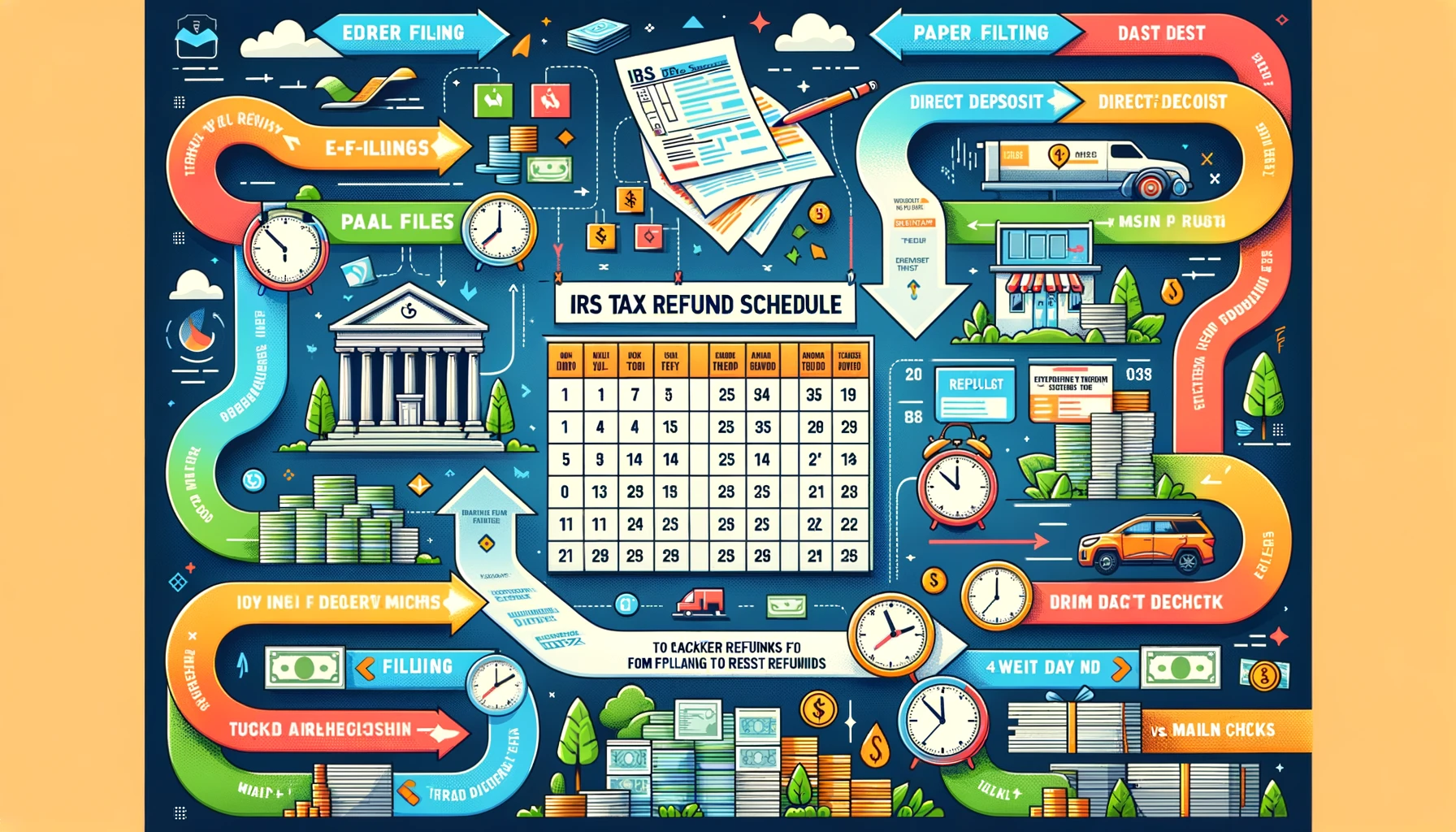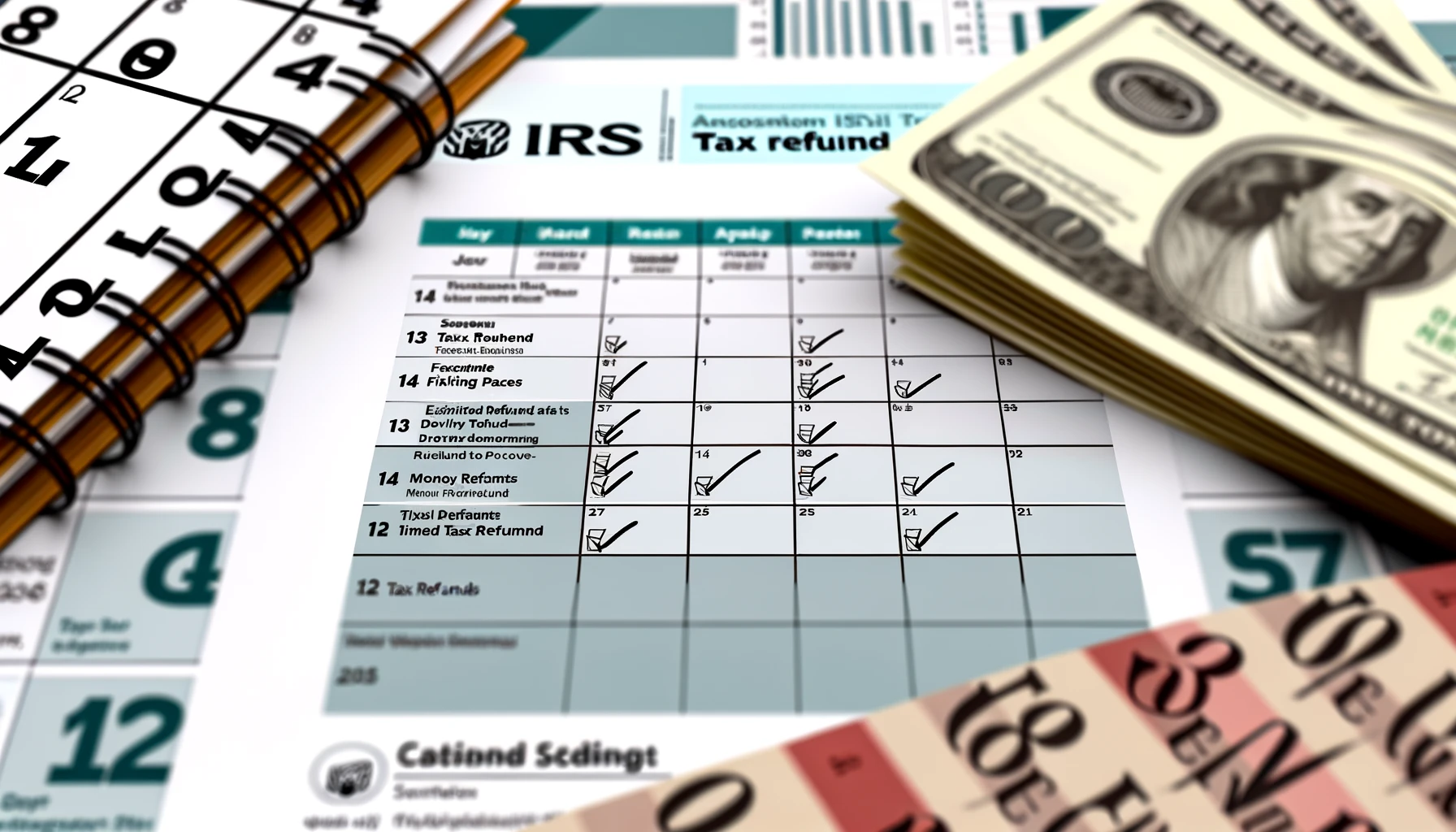Are you ready to tackle your taxes head-on and maximize your 2024 tax refund? Look no further! We’ve got you covered with all the latest updates, essential tips, and insider strategies to ensure you get the most out of this tax season. From understanding the IRS tax refund schedule to leveraging cutting-edge tools for tracking your refund status, we’ll walk you through everything you need to know to navigate the tax filing process like a pro.

New Enhancements for the 2024 Tax Filing Season
The 2024 tax filing season brings exciting new enhancements designed to streamline the filing process and empower taxpayers. Let’s dive into some of the key updates:
| Enhancement | Description |
|---|---|
| Direct File Pilot Program | Eligible taxpayers can now file their taxes for free directly with the IRS through this innovative program. |
| Expanded Taxpayer Assistance Centers (TACs) | IRS TACs offer in-person services with expanded hours to address taxpayer questions and concerns. |
| Improved Where’s My Refund? Tool | Enhanced tool provides clearer, more detailed refund status messages for increased transparency. |
Also read: IRS Code 806
Understanding Your IRS Refund
Let’s start by delving into the average IRS refund payments over the past few years. The table below illustrates the average IRS refund amounts for recent tax seasons:
| Tax Season (Tax Year-Filing Year) | Average IRS Refund |
|---|---|
| 2023-2024 (est) | $3,010 |
| 2022-2023 | $3,054 |
| 2021-2022 | $3,293 |
| 2020-2021 | $2,882 |
| 2019-2020 | $2,546 |
| 2018-2019 | $2,870 |
As you can see, the average refund amount can fluctuate from year to year, so it’s essential to stay informed.
When Can You Expect Your Refund?
One of the most common questions taxpayers have is, “When can I expect my refund?” The timing of your refund can vary depending on several factors. Here’s what you need to know:
- If you e-file and opt for direct deposit, the IRS estimates that most taxpayers will receive their federal refund between 8 and 21 days after their return is accepted.
- However, it’s important to note that there may be delays for taxpayers claiming the Earned Income Tax Credit (EITC) or the Additional Child Tax Credit (ACTC) due to the PATH act refund freeze.
- If you choose to receive a paper check instead of direct deposit, it may take an additional week.
- For returns filed by mail, refunds can take 4 to 6 weeks from the date the IRS receives a complete and accurate return.
Checking Your Refund Status

Wondering when your refund will arrive? The IRS offers a convenient tool called “Where’s My Refund?” (WMR) to track the status of your refund. Simply provide your social security number, filing status, and the exact whole dollar amount of your expected refund to access real-time updates.
What if Your Refund is Delayed?
If you haven’t received your refund within the expected timeframe, you might be wondering if you should contact the IRS. While reaching out to the IRS won’t expedite your refund, you can use the “Where’s My Refund” page or the IRS2Go application to check for updates.
State Tax Refunds
In addition to federal refunds, many taxpayers are also eager to receive their state tax refunds. The processing times for state refunds can vary, but as a general rule, you can expect to receive your state tax refund within 30 days of filing electronically or via mail.
Also read: IRS Code 571
Tips for Expedited Refund Processing
Getting your 2024 tax refund as fast as possible is a top priority for many taxpayers. Here are some expert tips to expedite the process:
- File Early: Beat the rush by filing your tax return in February or early March to increase the likelihood of a speedy refund.
- File Electronically: Opt for electronic filing to accelerate processing times and minimize delays associated with paper returns.
- Choose Direct Deposit: Select direct deposit for your refund to receive it in as little as three weeks, with the added convenience of up to three bank accounts.
- Verify Accuracy: Double and triple-check all information on your tax return, including identifying numbers and bank account details, to avoid processing delays due to errors.
2024 IRS Tax Refund Schedule and Payment Calendar
Understanding the IRS tax refund schedule is essential for managing expectations and planning accordingly. Here’s what you need to know:
| Filing Method & Refund Type | Refund Delivery Time |
|---|---|
| E-file & Direct Deposit | 1–3 weeks (often 2 weeks) |
| Paper File by Mail & Direct Deposit | 3 weeks |
| E-file & Paper Check by Mail | 6–8 weeks |
| Paper File & Paper Check by Mail | 6–8 weeks |
Important Dates for the 2024 Tax Filing Season
Mark your calendars with these critical dates to stay on top of your tax obligations:
- January 29: IRS begins processing tax returns for the 2024 tax filing season.
- April 15: Deadline to file tax return or request an extension (excluding Maine and Massachusetts).
- April 17: Deadline for Maine and Massachusetts to file tax returns or extensions (extended due to holidays).
- October 15: Deadline to file tax returns for extension filers.
Tracking Your Refund Status
Stay informed about the status of your 2024 IRS tax refund with these handy tools:
- Where’s My Refund?: Visit the IRS website or use the IRS2Go mobile app for real-time updates on your refund status.
Also read: American Express Credit Limit Increase
Leveraging Professional Expertise
When in doubt, seek assistance from credentialed tax professionals to ensure accuracy and peace of mind:
- Directory of Federal Tax Return Preparers: Find qualified professionals in your area, including attorneys, CPAs, and enrolled agents.
- Annual Filing Season Program (AFSP): Look for AFSP credentialed preparers for additional assurance and expertise.
FAQs: Your Burning Questions Answered
- How long does it take to receive a tax refund?
- The timeframe varies based on filing method and refund type, but most refunds are processed within three weeks.
- What if I make a mistake on my tax return?
- Double-check all information for accuracy to avoid delays; you can file an amended return if needed.
- Can I track my refund status online?
- Yes, utilize the Where’s My Refund? tool for real-time updates on your refund status.
- Should I file my taxes early?
- Filing early can expedite the refund process, especially during less busy months like February and early March.
- Is direct deposit the fastest way to receive a refund?
- Yes, opting for direct deposit can significantly speed up the refund delivery process.
- What if I need assistance with my taxes?
- Consider seeking help from credentialed tax professionals, such as CPAs or enrolled agents, for expert guidance.
- Are there any penalties for filing taxes late?
- Yes, failing to file or pay taxes on time may result in penalties and interest charges.
- Can I request an extension if I can’t file by the deadline?
- Yes, you can request an extension to file your taxes, but any taxes owed must still be paid by the original deadline to avoid penalties.
- What if I haven’t received my refund within the estimated timeframe?
- Contact the IRS for assistance if you haven’t received your refund within the expected timeframe.
- Where can I find more information about tax filing requirements?
- Visit the official IRS website or consult with a tax professional for comprehensive guidance.
Conclusion: Secure Your Maximum Refund Today!
With the right knowledge and strategies in hand, you can navigate the 2024 tax filing season with confidence and ease. Take advantage of electronic filing, direct deposit, and professional expertise to streamline the process and ensure you receive your refund promptly. Don’t let tax season stress you out—empower yourself with the tools and information you need to secure your maximum refund today!




Comments 5